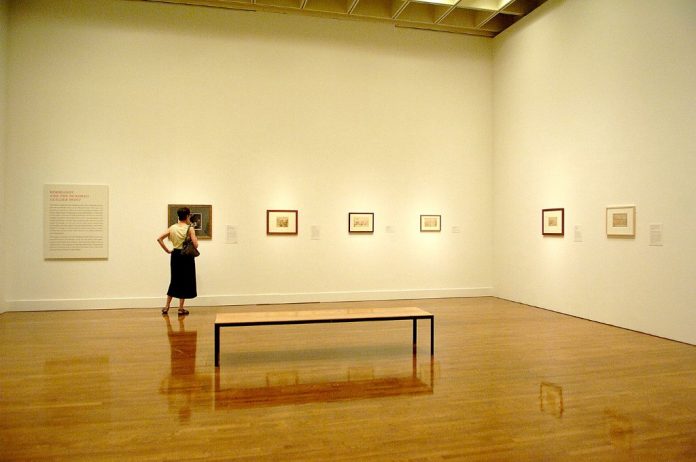Rembrandt van Rijn did not solve the centuries-old mystery or settle the equally aged argument over what the face of Jesus Christ really looked like.
After all, people are still debating that today.
But it wasn’t for the artist’s lack of effort, according to Lloyd DeWitt, curator of the Philadelphia Museum of Art’s newest major exhibition that showcases the 17th-century Dutch master’s infatuation with redefining how Jesus was portrayed in art and perceived by mankind.
Rembrandt and the Face of Jesus opened a three-month stay at the museum on Aug. 3. Some 220,000 people attended the same exhibition at the Musée de Louvre in Paris this spring and early summer. When the Philadelphia showing concludes on Oct. 30, it will make its final stop at the Detroit Institute of Arts.
The exhibition features 22 paintings, 17 drawings and nine prints assembled from public and private collections on both sides of the Atlantic, including the Philadelphia Museum of Art’s own archives.
According to Timothy Rub, the museum’s director and CEO, this “marks the first time that an exhibition including a substantial group of paintings by Rembrandt will be seen in Philadelphia,” although a private collection of the artist’s prints and drawings was shown here in 1932.
Further, perhaps the exhibition’s most famous work, The Supper at Emmaus — a 1648 painting owned by the Louvre — is on display locally for the first time in more than 70 years.
Philadelphia museum officials expect that the exhibition’s artistic and social/religious importance will make it a popular destination for a large crossover audience.
If nothing else, the controversial topic of re-imagining Jesus is sure to draw a crowd, much like it did in Rembrandt’s own place and time. He lived in a bustling, mostly Jewish enclave within the port city of Amsterdam and probably used real-life subjects that he encountered outside his home to influence his evolving representations of Jesus.
Early in his career, Rembrandt’s work adhered to the traditional depiction of Jesus as fair-haired and fair-skinned, with thin features and a full beard. Historians attribute this characterization to early interpretations of several ancient relics with links to Jesus, including the Shroud of Turin, as well as the Lentulus Letter, a document supposedly written by a Roman governor of Judea (Jerusalem) preceding Pontius Pilate in which the author describes Jesus’ features in firsthand detail.
Later, Rembrandt diverged from the traditional view, utilizing his singular ability to animate his subjects through innovative technique, thereby creating what many consider a more compassionate and expressive Jesus. The artist also began to portray a Jesus with darker hair and complexion and more prominent facial features similar to those he saw in the contemporary mortal subjects drawn from his environs.
The immigrant Jewish community in which Rembrandt lived featured two major groups — Spanish and Portuguese Jews who had fled the Inquisition, along with those who had fled persecution in Poland and Central Europe. DeWitt asserts that the artist wasn’t merely seeking to debunk convention, or at least challenge it, by modeling his depiction of Jesus after his neighbors.
“He wasn’t a (expletive)-stirrer, per se,” the curator said. “It was about finding truth. He saw these people as direct descendants (of Jesus) and it was the best source he had.”
If that’s the case, then Rembrandt’s apparent lack of consideration for geography and demographics did nothing to diminish his inspired, perhaps divine artistry.
Rembrandt’s favorite biblical story was that of Jesus’ journey to and supper at Emmaus, the curator said.
The story, told in the Gospel of Luke, recounts how Jesus appeared to two of his disciples as they walked dejectedly from Jerusalem to Emmaus following the crucifixion and resurrection. The disciples knew of Jesus’ empty tomb but did not recognize him in their midst.
Upon reaching Emmaus, the men invited Jesus to supper. When Jesus broke the bread, the disciples recognized him and he vanished. This astonished the men, who rushed back to Jerusalem to tell the other disciples.
The Supper at Emmaus, an oil painting on wood panel slightly larger than 2-feet-square, is considered Rembrandt’s preeminent work on the subject.
DeWitt describes it as “a complete revelation in its own right” for the artist’s complex use of color, light, texture and composition.
“It’s a moment of revelation. He’s showing something that can’t be shown, people changing their minds,” DeWitt said.
In constructing the scene in this work and others, Rembrandt further departed from tradition in depicting a simpler, humbler supper setting than the grandiose rooms previously shown in Roman-influenced art.
Another landmark inclusion in the exhibition is a series of works known collectively as the Heads of Christ. Rembrandt did not paint these busts to be sold. Rather, they were experiments of technique that the artist used as instructional materials for his students and as studies for his more elaborate religious scenes.
The half-dozen paintings were last side by side in Rembrandt’s own studio before a litany of personal troubles forced the artist into bankruptcy. His assets, including his studio and the paintings, were sold to pay his debts.
The Heads of Christ paintings highlight the artist’s then-innovative use of many tiny strokes to depict expression two centuries before the advent of the Impressionist art movement. ••
For information about “Rembrandt and the Face of Jesus” at the Philadelphia Museum of Art, visit www.philamuseum.org or call 215–763–8100.





